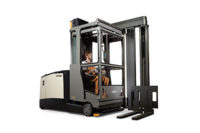Consumers are increasingly looking for ways to reduce the amount of food they throw out. Meanwhile, to reduce spoilage and face down other challenges, like low margins, refrigerated and frozen food processors are continually looking to be more innovative, improve efficiencies and lower costs across the cold chain.
About $180 billion passes through food distribution channels in the United States each year, with $500 billion passing through worldwide annually, making it the largest distribution sector in the global economy. So, how do cold chain wholesalers and distributors minimize errors and meet the high expectations of major retail chains? How do these wholesalers and distributors stay ahead of changing consumer habits, like the desires to eat healthier, consume fresh foods and be better stewards of the environment? How do they confront greater regulatory pressures and track-and-trace mandates? Suffice it to say, life in the food distribution industry is complicated.
Here are six recommendations to help distributors and wholesalers begin to successfully navigate the cold chain:
1. Get out of the in-house systems business; instead, focus on your core competencies, i.e. what makes you a great food distributor or wholesaler.
2. Leverage a dedicated supply chain management solution, one built for the cold chain and one that integrates information across multiple facilities, locations, platforms, regions and languages.
3. Insist on a solution that provides complete visibility into all customer interactions and details, enabling you to manage complex pricing issues, provide on-the-spot product information and elevate customer relationships.
4. Segment inventory by classifying products and applying rules for high-turnover, low-margin, high-value and slow-moving products, resulting in improved key performance indicators.
5. Automate purchase order creation, reducing administrative costs and errors.
6. Integrate planning whether your business model be demand-driven forecasting or planned forecasting to make the best use of inventory and resources, improve order accuracy and reduce lead time.
While food wholesalers and distributors have built a reputation as leaders in leveraging technology, they can stay atop their games by taking these suggestions to heart and continue to set the supply chain standards for other industries to emulate.




